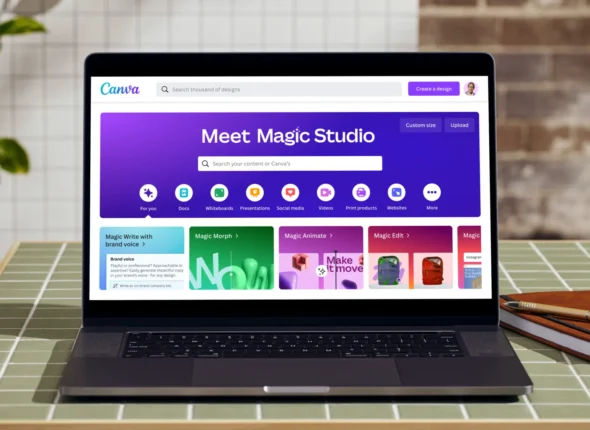
The Ultimate Guide to Becoming a Freelancer in India: Your Step-by-Step Journey
Are you considering freelancing in India? If so, you’re not alone! With the rise of remote work, growing tech access, and an ever-expanding gig economy, freelancing is becoming an increasingly popular career path.
But how do you break into the world of freelancing, especially in a competitive market like India? Don’t worry — this guide will walk you through everything you need to know to get started, from the basics to pro tips for success.
1. Start with Your Skills and Niche
Freelancing is all about offering specific services. Before you dive in, it’s important to take stock of what you’re good at. Ask yourself:
Are you a great writer, graphic designer, or developer?
Do you excel in marketing, project management, or social media management?
Choosing your niche is key to standing out. For instance, if you’re a content writer, instead of saying “I write articles,” you might want to specify, “I write SEO-optimized blog posts for tech startups.” The more specific you are, the better.
2. Understand the Legal Side
Freelancing isn’t just about doing the work; it’s also about doing it legally. Here’s a quick breakdown:
PAN Card: You need this for tax purposes.
GST Registration: If you’re earning more than ₹20 lakh a year, you’ll need to register for GST. Even if you’re below that, some clients might require you to have GST.
Income Tax: Freelancers in India need to file taxes based on their income, so it’s a good idea to keep track of what you’re earning and spending.
Contracts and Invoicing: Protect yourself by having a written agreement with clients. It doesn’t have to be complicated, but it should outline project timelines, rates, and payment terms.
3. Build Your Portfolio (And Keep It Simple)
A portfolio is your freelancing resume. It shows potential clients what you can do and why they should hire you.
Here’s how to get started:
Create a Simple Online Portfolio: Use platforms like Behance (for designers) or GitHub (for developers). If you’re a writer, a personal blog can work just as well.
Showcase Your Best Work: Don’t overwhelm clients with everything you’ve done. Highlight your strongest, most relevant projects.
Add Testimonials: If you’ve worked with clients before, ask them for reviews or recommendations. A good testimonial can go a long way in building trust.
4. Choose the Right Freelance Platforms
Freelance platforms are a great way to find your first few gigs, especially when you’re starting out. Here are some popular ones for Indian freelancers:
Upwork: One of the biggest platforms globally, where you can bid for a variety of projects.
Freelancer.in: This is India-specific and caters to a wide range of industries.
Fiverr: You can list services starting at ₹500, and clients can browse through your offerings.
Toptal: For experienced professionals only, Toptal has a tough selection process, but if you get in, it’s a great platform for high-paying gigs.
5. Networking: It’s More Than Just Business Cards
Networking is a huge part of freelancing. You’re not just looking for clients; you’re building relationships that could lead to repeat business or referrals. Here’s how to do it:
LinkedIn: Optimize your profile, post regularly, and connect with potential clients.
Social Media: Don’t just post your work — share insights, engage with others in your industry, and let people know what you’re offering.
Word-of-Mouth: Deliver excellent work, ask happy clients for referrals, and watch your client base grow.
6. Set Your Rates (Without Underselling Yourself)
Pricing can be one of the trickiest parts of freelancing. If you charge too little, you risk undervaluing your work. But if you charge too much, you might scare off potential clients. Here’s how to find that sweet spot:
Research: Look at what others in your field are charging. Check out sites like PayScale or Glassdoor for industry averages.
Hourly vs. Project-Based Pricing: Many freelancers charge hourly, but for some projects, it’s better to charge a flat fee. For example, a website redesign might cost ₹30,000, while a blog post could cost ₹2,000.
Start Low, Then Gradually Increase: If you’re just starting out, it’s okay to set your rates on the lower end to build credibility and gain reviews. Once you’ve got some experience under your belt, you can gradually raise your rates.
7. Build Your Personal Brand
As a freelancer, you’re not just selling a service — you’re selling yourself. Your personal brand should reflect your expertise, professionalism, and personality.
Create a Professional Website: Think of it as your digital business card. Include your portfolio, services, and contact info.
Engage on Social Media: Share insights, tips, and updates. Whether it’s LinkedIn, Twitter, or Instagram, being active online can help you connect with potential clients.
Content Marketing: Share blog posts or create videos around your niche. This not only helps with SEO but also shows potential clients you’re an expert in your field.
8. Time Management & Staying Productive
When you’re freelancing, it’s easy to let your schedule run wild. But remember: if you don’t manage your time, you risk missing deadlines or burning out.
Use Time-Tracking Tools: Apps like Toggl or Clockify can help you track how much time you spend on each project.
Stay Organized: Tools like Trello, Asana, or Notion can help you organize tasks and deadlines. You’ll also get a sense of accomplishment as you check things off your list.
Set Boundaries: It’s easy to work late into the night, but make sure you set clear working hours to avoid burnout.
9. Finances: Keep It Tight
Freelancers often face cash flow issues, especially when payments are delayed or irregular. Here’s how to keep your finances in check:
Create an Emergency Fund: It’s a good idea to have 3–6 months of expenses saved in case of a dry spell.
Invoice Promptly: Use tools like QuickBooks or Zoho Books to generate professional invoices and keep track of your payments.
Track Your Expenses: Keep track of business expenses like software subscriptions, internet bills, and office supplies. This will help when you’re filing taxes.
10. Keep Learning and Evolving
The world of freelancing is constantly evolving, so it’s important to keep improving your skills and knowledge.
Invest in Courses: Platforms like Coursera, Udemy, and Skillshare offer great courses to help you level up.
Stay Updated: Subscribe to blogs, newsletters, and podcasts relevant to your field to stay on top of trends.
Ask for Feedback: After completing a project, ask your clients for constructive feedback. It can help you refine your skills and approach.
Conclusion: Freelance Life in India
Freelancing in India offers flexibility, independence, and endless opportunities. But it requires hard work, discipline, and the right mindset. By building a strong portfolio, networking strategically, setting fair rates, and managing your time and finances effectively, you can carve out a successful freelancing career.
Ready to get started? The world of freelancing is waiting for you. All you need is the right mindset, a clear plan, and a bit of hustle.
The Ultimate Guide to Becoming a Freelancer in India: Your Step-by-Step Journey
- July 24, 2025
- Com 0
The Ultimate Guide to Becoming a Freelancer in India: Your Step-by-Step Journey Are you considering freelancing in India? If so,...
Canva: The Ultimate Design Tool and Its Latest Top 10 AI-Powered Features
- July 24, 2025
- Com 1
Canva: The Ultimate Design Tool and Its Latest Top 10 AI-Powered Features In today’s world, graphic design doesn’t have to...
The Rise of AI as a Designer: Is it Time to Embrace the Future?
- July 24, 2025
- Com 1
The Rise of AI as a Designer: Is it Time to Embrace the Future? In the ever-evolving world of design,...




